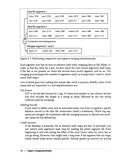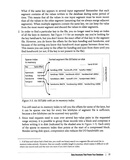书籍详情
![《设计数据密集型应用》[37M]百度网盘|亲测有效|pdf下载](/uploads/s0309/80e084cc7e508391.jpg)
![《设计数据密集型应用》[37M]百度网盘|亲测有效|pdf下载](/uploads/s0309/80e084cc7e508391.jpg)
设计数据密集型应用
- 出版社:科技生活自营旗舰店
- 出版时间:2017-10
- 热度:6783
- 上架时间:2024-06-30 09:08:33
- 价格:9.0
免责声明
本站支持尊重有效期内的版权/著作权,所有的资源均来自于互联网网友分享或网盘资源,一旦发现资源涉及侵权,将立即删除。希望所有用户一同监督并反馈问题,如有侵权请联系站长或发送邮件到ebook666@outlook.com,本站将立马改正
内容介绍
编辑推荐
《设计数据密集型应用(影印版)》特点:
深入分析你已经在使用的系统,并学习如何更高效地使用和运维这些系统
通过识别不同工具的优缺点,作出更明智的决策
了解一致性、可伸缩性、容错性和复杂度之间的权衡
理解分布式系统研究,这些研究是现代数据库构建的基石
走到一些主流在线服务的幕后,学习它们的架构
深入分析你已经在使用的系统,并学习如何更高效地使用和运维这些系统
通过识别不同工具的优缺点,作出更明智的决策
了解一致性、可伸缩性、容错性和复杂度之间的权衡
理解分布式系统研究,这些研究是现代数据库构建的基石
走到一些主流在线服务的幕后,学习它们的架构
内容简介
今天,数据是系统设计的众多挑战中非常核心的部分。我们需要解决许多难题,例如可伸缩性、一致性、可靠性、效率以及可维护性。此外,工具的选择纷繁复杂,包括关系数据库、NoSQL数据库、流式处理器或批处理器以及消息中间件。对于应用程序来说,哪个才是正确的选择?如何才能搞清楚所有这些时髦词?
在这本务实且全面的指导之作中,作者Martin Kleppmann会带你领略这一领域的多样性,他会分析各种数据处理工具和数据存储工具的优缺点。软件在不断变化,不过基本的原则没有变。
通过《设计数据密集型应用(影印版)》,软件工程师和架构师会学到如何在实际中应用这些原则,如何在现代应用程序中充分使用数据。
在这本务实且全面的指导之作中,作者Martin Kleppmann会带你领略这一领域的多样性,他会分析各种数据处理工具和数据存储工具的优缺点。软件在不断变化,不过基本的原则没有变。
通过《设计数据密集型应用(影印版)》,软件工程师和架构师会学到如何在实际中应用这些原则,如何在现代应用程序中充分使用数据。
作者简介
Martin Kleppmann,英国剑桥大学的一名分布式系统研究员。在此之前他曾是软件工程师和企业家,在Linkedin和Rapportive工作过,从事大规模数据基础设施相关的工作。Martin经常在大会做演讲,写博客,也是开源贡献者。
精彩书评
★这本书太棒了,它在分布式系统理论和实际工程之间的巨大鸿沟上架起了一座桥梁。多希望十年前就能读到这本书,那么这些年来我犯的很多错误就都能避免了。
——Jay Kreps,Apache Kafka创始人,Confluent CEO
★这是一本软件工程师的必读之作。《设计数据密集型应用》是能够连接理论和实践的稀有资料,它能帮助开发者在设计和实现数据基础设施及系统的时候作出明智的决策。”
——Kevin Scoot,微软CTO
——Jay Kreps,Apache Kafka创始人,Confluent CEO
★这是一本软件工程师的必读之作。《设计数据密集型应用》是能够连接理论和实践的稀有资料,它能帮助开发者在设计和实现数据基础设施及系统的时候作出明智的决策。”
——Kevin Scoot,微软CTO



